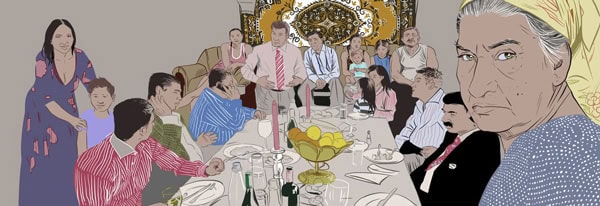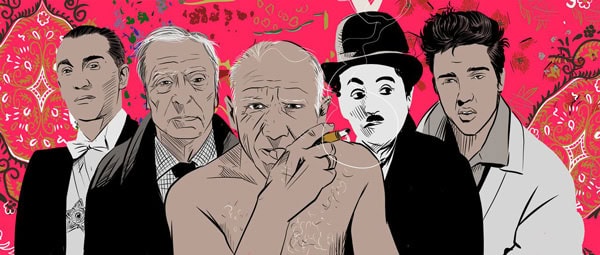Roma people in the UK listed things they wanted people to better understand about their communities before their thoughts were transformed into art
‘Misunderstood’ Roma people have had their thoughts turned into comic-style art in a bid to challenge stereotypes about their heritage and culture. Members of Roma communities in Romania, Slovakia and Hungary who now live in the UK worked with Friends of Romano Lav, a Glasgow-based charity that supports young Roma migrants, to devise the Roma Guide.

Although Roma people are often described as leading a nomadic way of life, 95 per cent of European Roma people have fixed housing. Artwork: Alexandre De Maio
It is designed to stimulate interest in Roma culture, history and people – delving beyond stereotypes, as Juliana Penha who helped run the project explained. “Roma communities are underrepresented in the media and the few pieces of media coverage about them are negative,” said Penha.
“Popular knowledge about Roma culture is based on myths and negative portrayals, largely produced by media sensationalism. Despite being Europe’s largest minority, Roma people are voiceless. This project challenge the perceptions people have about these communities.”
Popular knowledge about Roma culture is based on myths and negative portrayals, largely produced by media sensationalism
Research carried out by the European Commission suggests that Roma people, of whom there are approximately 10 million in Europe, suffer more from racism than any other minority in Europe. Originally from northern India, Roma people have had a strong presence in Europe since around the 13th century. The EU has long stressed the need for better integration of and with their communities.
This guide is part of The World Profile project that explores marginalised individuals, groups and minorities on every continent using journalism, comics and animation.
Marcela Adamova is a Roma woman from Slovakia. She holds a master’s degree in public administration and is one of the founders of the Friends of Romano Lav NGO. “Because my skin is white and my eyes are blue, many people say that I do not look like Roma. But what does a Roma person look like?” she said.

Though Roma people have little representation in the media, there are many well-known figures who are thought to have Roma heritage, from Elvis Presley and Charlie Chaplin to Michael Caine and Pablo Picasso. Artwork: Alexandre De Maio
One fact in the Roma Guide investigates the difference between the words ‘Roma’ and ‘gypsy’, exploring the many prejudices often associated with the word ‘gypsy’. In London in 1971, at the first World Romani Congress, the words Roma and Romani [‘Rom’ meaning man in Romani] were chosen to define this ethnic group.
Alexandre De Maio, a Brazilian cartoonist and journalist, created the accompanying artwork.

Roma people have historically suffered disproportionally from poverty and social exclusion, facing discrimination in education, employment, housing and health. Artwork: Alexandre De Maio
Artwork: Alexandre De Maio
Read our feature, Redrawing the line, about how comics are increasingly experimenting with diverse and positive portrayals of characters
Reasons to support Positive News
#7: It’s beautiful and useful
We believe that news can be beautiful. That’s why our magazine isn’t only intelligent but also exquisitely designed. And, Positive News is a carbon neutral magazine printed to high environmental standards, so you can read it guilt-free.